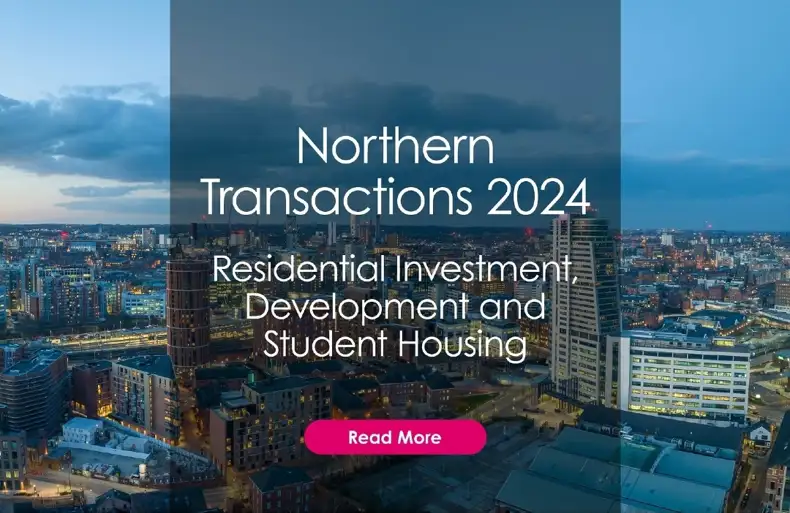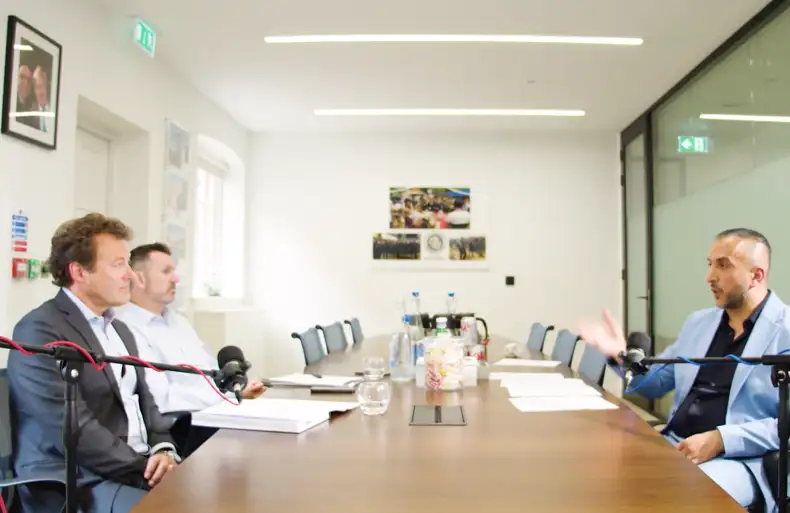Blog | Residential Investment | Permitted Development
Permitted Development - What's your Exit?

In 2013 legislation was passed that allowed offices to be converted into residential dwellings without the need for, what can be, a prolonged planning process. Fast forward a couple of years and, on the investment side of the business, we started seeing these converted office buildings come to life as fully occupied residential investments.
The first that I personally transacted was in 2015, a building in the regions that had been converted into 36 dwellings. On paper the key characteristics all worked - good location, close to transport links and decent rental demand. But feedback from interested parties was that, whilst the fundamentals were fine, the workmanship was poor, with small flats and compromised room sizes and, in some cases, internal pillars dissecting living rooms and reducing natural light.
Given these characteristics were aligned with many of the early conversions that we saw in the market, we found that there was a stigma being attached to permitted development (PD), with some instances even being highlighted in mainstream media articles. This resulted in many of the larger funds, institutions and property companies not willing to engage. We were relying on high net worths and smaller property companies propping up the market. So, whilst there was a market for such investments, it was limited and ultimately pricing was yield driven (in many cases double digit gross yields), with little prospect of anything other than the schemes being ‘cash cows’.
Fast forward eight years to 2022 and, many PD sales later, I found myself inspecting another office to residential conversion in Brentwood of 330 apartments – Warley HQ, which was formerly the European Ford headquarters. The scheme was immaculately finished, complete with onsite amenities including working from home pods, gym, cinema rooms, restaurants and garden platforms. In terms of an office to residential conversion it was, and is, as close to an institutional ‘build to rent’ product that I have seen.
We went on to complete on the sale of 125 of the apartments in 2023 to a UK based fund for £36M and a projected 5.5% gross yield - an entity whom eight years ago would not have considered purchasing a converted office building and certainly not at pricing that is aligned with new build products. This buyer profile is now not an anomaly within this sector, nor the associated yield.
So why such a turnaround in pricing and buyer profile?
In 2020 the Government announced a further requirement that all new office to residential conversions must provide adequate natural light and comply with minimum space standards set at a national level. This meant the gross internal area of any new home must be no smaller than 37sq m. These changes assisted in the delivery of a higher quality of stock.
In addition, Environmental, Social and Governance (ESG) characteristics have been a huge driver for institutional money within the residential sector, which has filtered its way down to property companies and high net worths alike. The repurposing of existing buildings into residential has therefore been favourably looked upon when deploying money.
That said, this does not mean the newer larger entrants to the market will compromise on quality. In the main they are looking for:
- Units finished to an institutional standard
- Established residential locations
- A location close to amenities or on-site amenities provided
- Excellent transport links or sufficient car parking for residents
- Units not compromised by either configuration or size
- A full suite of warranties and EWS1 forms (where necessary)
- EPCs with a rating of C or above
If these boxes are all ticked there is now institutional, larger property company and high net worth money looking at the sector, which will continue to drive pricing.
During 2023, we transacted over £100M of sales across five deals within the M25 of newly completed office to residential conversion schemes, all of which sold to different purchasers (including both UK and overseas funds). Each property comprised c.100+ unit schemes, ranging in lots sizes of £12M-£36M. Achieved gross yields ranged from 5.5%-8.5%, the keener yields being achieved at the start of the year, largely due to the differing interest rate environment.
In July 2021 planning laws changed that terminated the ability to convert offices (over 1500sq m) to residential through PD which has created further delays in delivering much needed homes.
We have however now seen a reversal in these planning laws, with the government allowing office blocks of any size (and other Class E buildings) to be converted to flats without planning permission, as well as the removal of the requirement for buildings to be vacant for at least three months before being eligible for conversion. For more details read my colleague Anthony Dixon’s blog - Large scale commercial to residential conversion via Permitted Development – it’s back, is it the same as before?
With a lack of land available, especially within London, these latest announcements are extremely positive.
At the time of writing there is approximately 16m sq ft of empty second-hand office space within London alone which could account for around 28,000 new homes. With specialist developers in this space and institutional money which needs to be deployed, we see continued growth within this sector and more successful sales for Allsop and our clients moving forward!
Related Insights

Northern Residential Property Transactions 2024 & Market Update
Take a look at the properties we sold in 2024 and read our market updates.

Allsop announces next senior partner
Allsop, a leading UK property consultancy, has named Andrew Boyd as its next Senior Partner, with Scott Tyler to step down fr...

Podcast: The challenge of affordable student accommodation; is there a solution?
Want to know more or would simply like some advice? We hope you find this podcast useful. If you want to know more about topi...

"Where would you invest £100M?" Nabeel Mussarat interviews Scott Tyler & Richard Adamson
Scott Tyler and Richard Adamson shared their views on the current property market with property investor, Nabeel Mussarat.